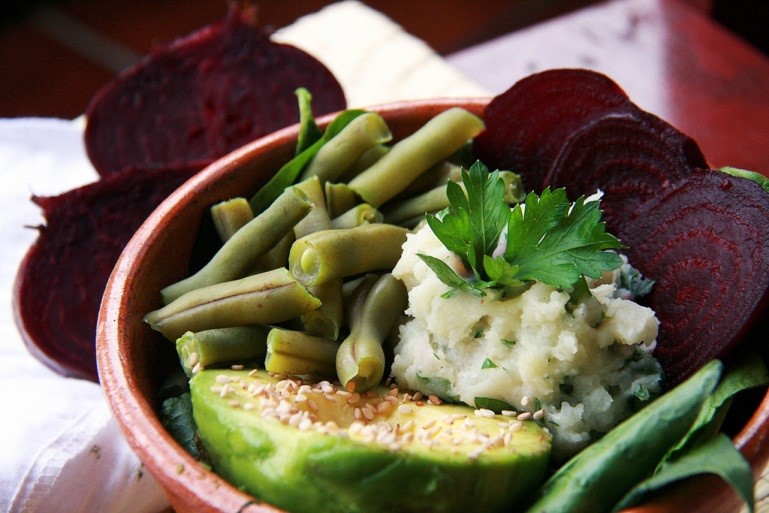An extremely “Instagrammable” dish that actually turns out to be not only pleasant to see, but above all, a solution to enjoy a quick and nutritious meal. But what exactly is a Buddha bowl?
Before a dish becomes a visual trend increasingly followed by food bloggers, lovers of yoga and healthy foods, it must have been totally worth it!
A Buddha bowl looks like a bowl (bowl) in which foods of different kinds are placed from the combination of which is a dish with vibrant colors that immediately invites you to photograph. No excuse to eat it!
Jokes aside, the success of the photography of this dish seems almost to remind us of how the food does not feed only our body but also our soul. According to a Japanese saying, “First, you eat with your eyes, then with your sense of smell and finally with taste.”
Returning to our bowl, it seems that there is no official definition for “Buddha bowl” and there are no precise rules for their preparation. The Urban dictionary defines it as a bowl so packed that it looks like a rounded belly very similar to that of the Buddha.
Preparations in the bowl have long belonged to the fusion tradition of the grain/ rice/sunshine/macro bowl. Therefore, it is not difficult to think of the Buddha as a new version or an evolution of these.
But let us continue our journey in this world made bowls full of food, a true mirage! Isn’t it?
In fact, whether it is vegetarian-based or not, the Buddha-bowl is a unique and complete dish of all the macronutrients we need. Just start with a base of carbohydrates (potatoes, rice, pasta, cereals) and combine a source of protein (fish, meat, legumes) and a source of fats (avocado, peanut butter, olive oil).
The fun part of this dish is that you really can make it with the foods you prefer. The more colored they are, the more they show a high nutritional quality. Be inspired by the orange color of sweet potatoes or carrots, green avocado, yellow and red pepper or purple cabbage and prepare the Buddha bowl that inspires you!
HOW TO PREPARE YOUR BUDDHA BOWL (ALSO WITHOUT RECIPE)
Yes, sometimes the recipe is not needed – it is the case of these delicious preparations assembled at the moment with what is at home, more or less. However, to be a real Buddha bowl and not a simple salad, one must observe 3 rules: proportion, aesthetics, and seasonality.
Proportion: The first rule concerns the composition, which can be made by combining many different ingredients, but following a certain proportion and the alternation of three defined ingredients: vegetables (about 70%), a cereal (in proportion of about 15%) and a protein, chosen from vegetable or animal (egg, fish, chicken, about 15%).
You do not need to weigh the ingredients, but it is good to know that because it is well-balanced, the bowl of the Buddha must respect these proportions. Then choose a cereal (or similar) as a base, preferably integral: rice, bulghur, and buckwheat are my favorites, but you can also use rice noodles or durum wheat, soba, quinoa, millet … a more Italian version and the Mediterranean could include spelled or barley. Then add raw vegetables (sometimes cooked, but briefly) in quantity.
Mise en place: At this point, you have to evaluate the aesthetics: the bowl should be composed by arranging the ingredients separately, as in a drawing, and not mixing everything together as you do with the classic salads. It favors different colors, both to guarantee a wider variety of vitamins and nutrients, and to make it taste more interesting and never boring.
Seasonal: Finally, seasonality: the Buddha bowls are rigorously prepared with fresh, seasonal and as local as possible food items. No canned corn, then!
You can add good vinaigrette – or you could create some tasty healthy topping with bergamot juice, salt, extra virgin olive oil and a pinch of freshly ground black pepper. Use your creativity and your Buddha bowl won’t let you down!
